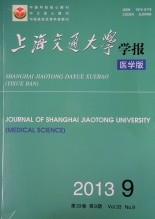Objective To investigate the value of UbcH10, Ki-67 and hTERT mRNA in differential diagnosis of breast apocrine lesions. Methods The expression of UbcH10 and Ki-67 was detected by immunohistochemical EnVision method, and the expression of hTERT mRNA was determined by chromogenic in situ hybridization in 20 cases of apocrine metaplasia (APM), 26 cases of apocrine adenosis (AA), 32 cases of atypical apocrine hyperplasia (AAH), 22 cases of apocrine ductal carcinoma in situ (ADCIS) and 35 cases of invasive apocrine carcinoma (IAC). Results The positive expression of UbcH10 in APM, AA, AAH, ADCIS and IAC was 10.0%, 50.0%, 62.5%, 81.8% and 94.3% respectively, that of Ki-67 was 5.0%, 50.0%, 62.5%, 81.8% and 94.3% respectively, and that of hTERTmRNA was 45.0%, 84.6%, 81.3%, 81.8% and 85.7% respectively. The average proliferation index of Ki-67 expression in APM, AA, AAH, ADCIS and IAC was 1.01%, 5.35%, 7.53%, 16.05% and 31.12% respectively. There were significant differences in the positive expression rates of hTERT mRNA, Ki-67 and UbcH10 between APM and AA, AAH, ADCIS and IAC (P<0.05), while there was no significant difference between two adjacent groups of AA, AAH, ADCIS and IAC (P>0.05). There were significant differences in the average proliferation index of Ki-67 among AA, AAH and ADCIS (P<0.05). Conclusion Observing the histopathological characteristics with HE staining and detecting Ki-67 with immunohistochemical method may improve the accuracy of differential diagnosis of benign and malignant lesions in the breast apocrine lineage to some extent.

